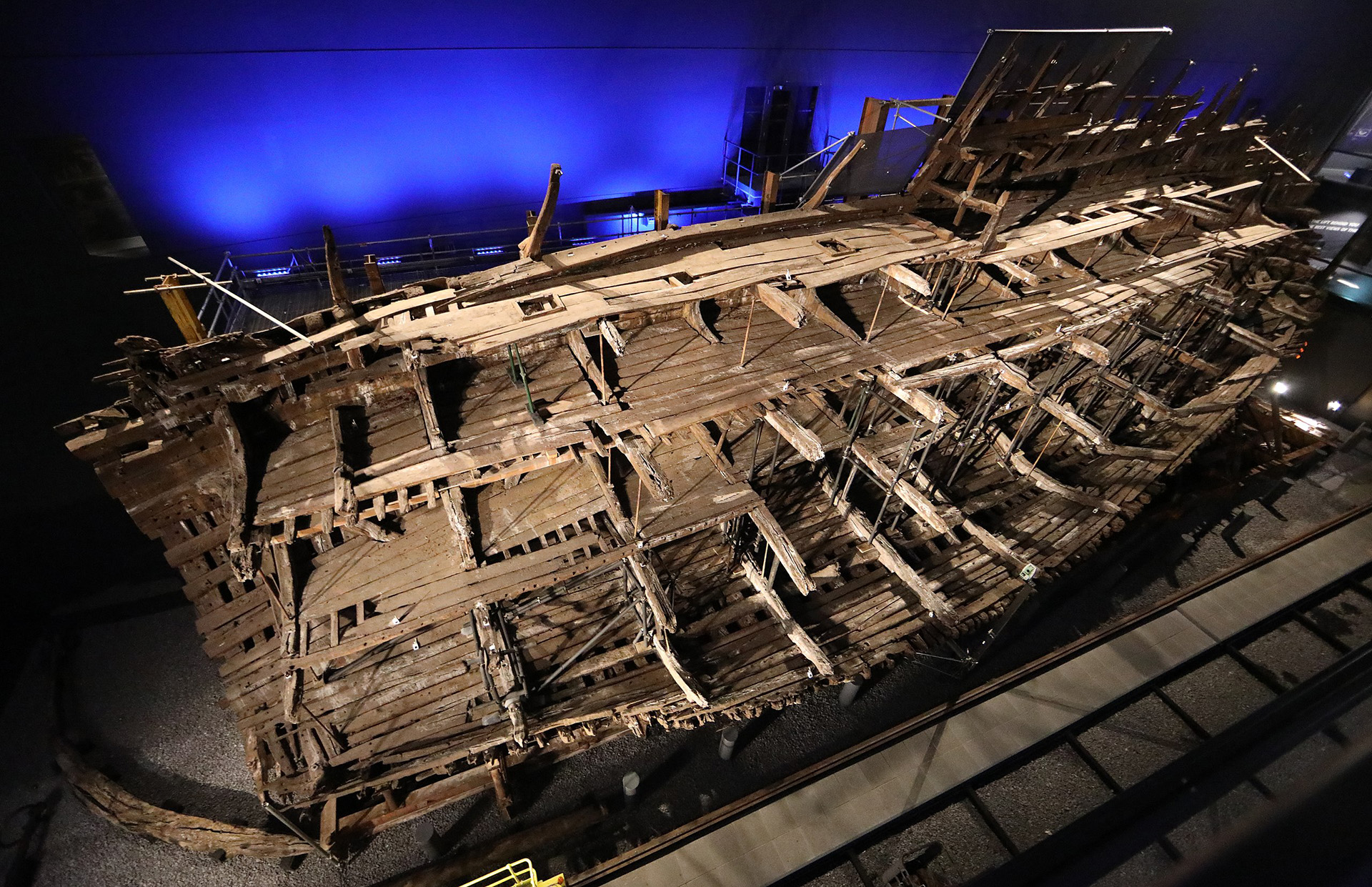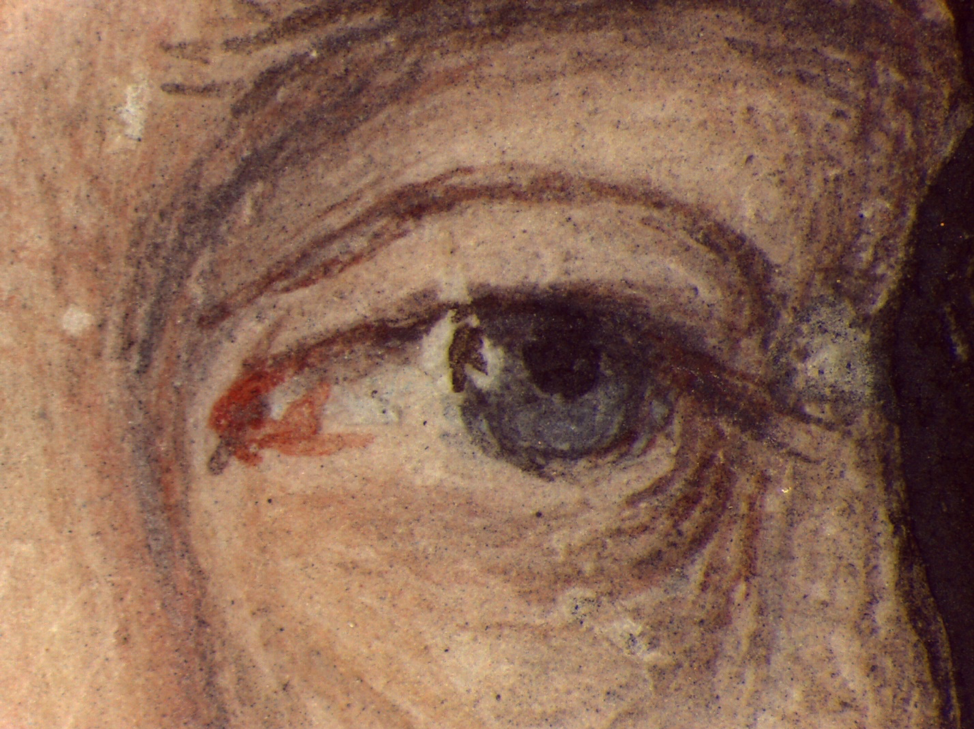December 21, 2020
This circular-shaped miniature is believed to be a Portrait of Sir George Carew, Henry the VIII’s Vice Admiral of the Royal Fleet, and its attribution is based on a drawing and painting of Sir George Carew (ca. 1504–1545) by Hans Holbein the Younger. In 1545, Carew was the naval commander of an English prototype warship, the Mary Rose, when it sank in the Solent, a strait between mainland England and the Isle of Wight.

Illustration of the carrack Mary Rose from The Anthony Roll, ca. 1546, watercolor on vellum, British Library, photo by Gerry Bye
The ship’s remains were rediscovered by divers in 1971, and the Mary Rose was raised from its watery grave eleven years later. After an extensive conservation funded by the Mary Rose Trust, the vessel was put on display in a museum dedicated to the flagship exactly 471 years after it sank. Incredibly, the starboard hull remained intact by being embedded in mud on the seabed, which prevented it from being eroded by rolling tides and water-based bacteria. In total, 19,000 items were carefully retrieved from the ship’s original cargo.

Remains of the Mary Rose and support structure, July 2019, photo by user:geni
This portrait of Carew in the Center’s collection is painted in watercolor and shell gold on a piece of parchment made from animal skin. The pigments were made from ground minerals, some man-made materials, and powdered gold leaf, which is called “shell gold” because the mixture of golden powder, gum arabic, and water were stored in a seashell. The parchment was mounted onto a paper card and set into a case, which would have probably been made of turned wood or ivory, as the miniature’s silver case is not original.

Attributed to Hans Holbein the Younger, Portrait of a man, probably Sir George Carew (ca.1504–1545) (detail), ca. 1540
Under magnification, one can see the very fine brushwork in the details of the face. The artist employed a variety of lines made by crosshatching brushstrokes and solidly filled broader areas of color. Unfortunately, the miniature must have been left unprotected without a locket, which resulted in scratches on the paint surface. Miniatures like this one are very fragile objects and are mainly kept in a case or frame under glass for protection.

Attributed to Hans Holbein the Younger, Portrait of a man, probably Sir George Carew (ca.1504–1545) (detail), ca. 1540
Zooming in further, in this detail of Carew’s right eye—which is only a couple of millimeters in size—one can see the expressiveness of the brushstrokes that form the eyelashes and modeling around the socket. One can even observe some of the individual dark pigment particles that comprise the paint.
On the left side of the miniature includes this detail, rendered in shell gold on top of a granular blue mineral pigment, which looks similar to azurite. Light sparkles off of the coarsely ground pigment particles, making the blue background flicker against the shell gold inscription. In Latin, Aetatis means “at the age of,” and on the right of the bust an inscription notes Carew’s age at the time of the painting SVE-35.

Attributed to Hans Holbein the Younger, Portrait of a man, probably Sir George Carew (ca.1504–1545) (detail), ca. 1540, X-ray images by Eric Stagmaier
Looking even deeper at this work, in this X-ray one can see beneath the top layers of paint. The lightest areas distinguish white lead pigment or mixtures including white lead and shell gold that comprise the inscription and around its outer edge. These are the densest pigments that block more X-radiation in a way similar to how human bones affect this imaging in medical applications.
Through the technical study of this portrait of Carew, and the excavated Mary Rose he sailed, we can connect with Tudor history and Henry VIII’s great battleship in a material way.
Written by Theresa Fairbanks Harris, Senior Conservator of Paper, Yale Center for British Art; X-ray images by Eric Stegmaier, Senior Conservation Assistant, Yale Center for British Art; photomicrographs by Jessica David, Senior Painting Conservator, Yale Center for British Art; and independent painting conservator Polly Saltmarsh.


